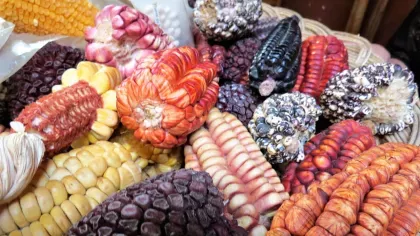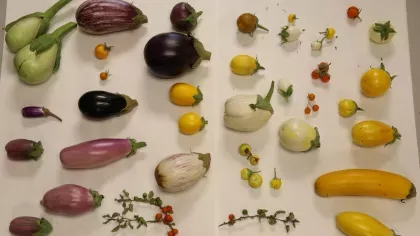3 June 2021
Where do watermelons originate from?
With the help of DNA and Egyptian tomb paintings, a long debate has been settled.

Squeezed and sliced into fresh cocktails and salads, the bright pink juicy flesh of a watermelon is an iconic summer delight.
But when it comes to understanding the exact origin of our domesticated watermelons, this is something that has puzzled scientists for a long time.
That is, until now.

Sweet and deadly
Watermelon (Citrullus lanatus) is part of Citrullus, a genus that contains six other wild species, most of which can't be eaten raw due to the bitter tasting compounds cucurbitacins, which can also kill you.
Four species (C. amarus, C. ecirrhosus, C. naudinianus, and C. rehmii) are native in the Namib–Kalahari region in South Africa (though C. amarus is also naturalized in Australia); one (C. mucosospermus) in West Africa; and one (C. colocynthis) in northern Africa to West India.
It was hypothesised in the 1930s that domesticated watermelon descended from the citron melon C. amarus in South Africa.
However, we now know that was a taxonomic mistake.
Melons in a tomb
In a study led by Prof. Susanne Renner (University of Munich) and Dr. Guillaume Chomicki (University of Sheffield), and working with partner institutions such as the Boyce Thompson Institute and the Holley Center for Agriculture and Health, we sequenced the DNA of watermelon and other Citrullus species.
Our analysis showed that the closest relative to the domesticated watermelon is the Kordofan melon (C. lanatus subsp. cordophanus) from Sudan in North East Africa.
The wild, and possible ancestor, Kordofan melon has a white non-bitter pulp.
Our findings are consistent with Egyptian tomb paintings that have recently been unearthed to show the consumption of raw watermelon as a dessert in 4360 BP in the Nile Valley.
One of the paintings even matches the morphology of a Kordofan melon.


Watermelon cousins
It’s estimated that over 200 million tonnes of watermelons are produced globally every year and is one of the top 10 most important crops in Central Asia.
However, the fruit is highly susceptible to a range of diseases and pests, for example the watermelon mosaic virus, all of which can affect quality and yields.
Wild relatives (or “cousins”) of crops are a rich source of useful genes, such as disease resistance, that can be integrated into the domesticated crops we eat today.
This is why we developed the first detailed genetic map of the Kordofan watermelon.
We hope that, together with more clarity on the history of watermelons, we may soon be able to breed disease-resistant varieties.
Read the paper
Renner, S.S., Wu, S., Pérez-Escobar, O. et al. (2021). A chromosome-level genome of a Kordofan melon illuminates the origin of domesticated watermelons. PNAS e2101486118.



